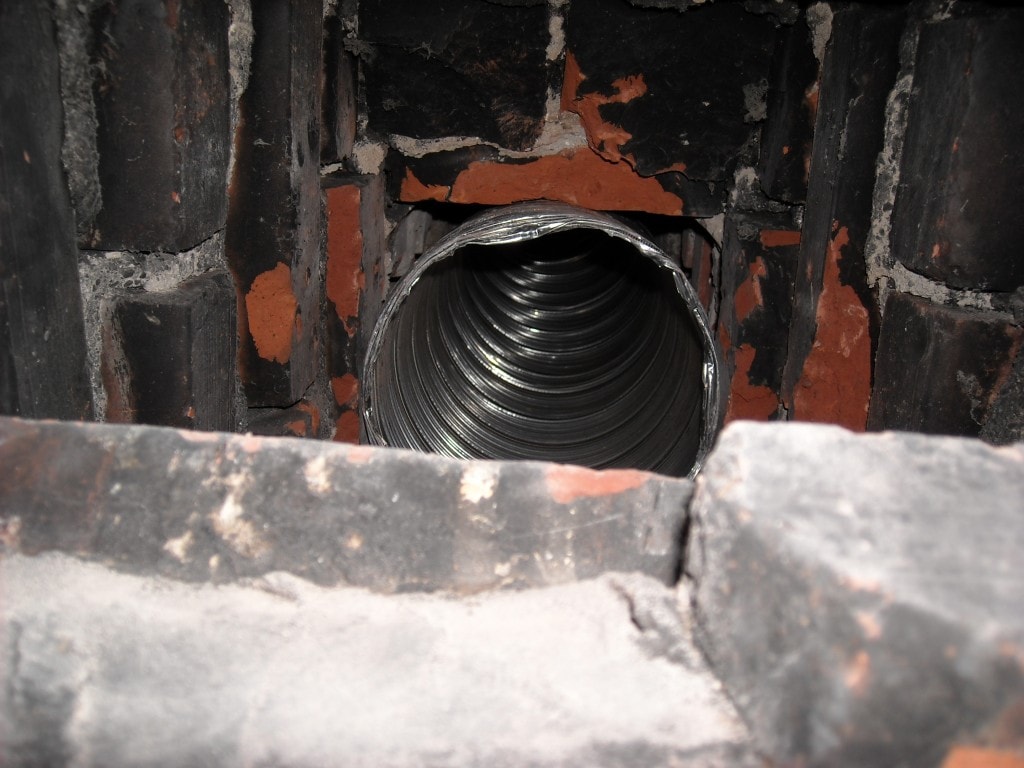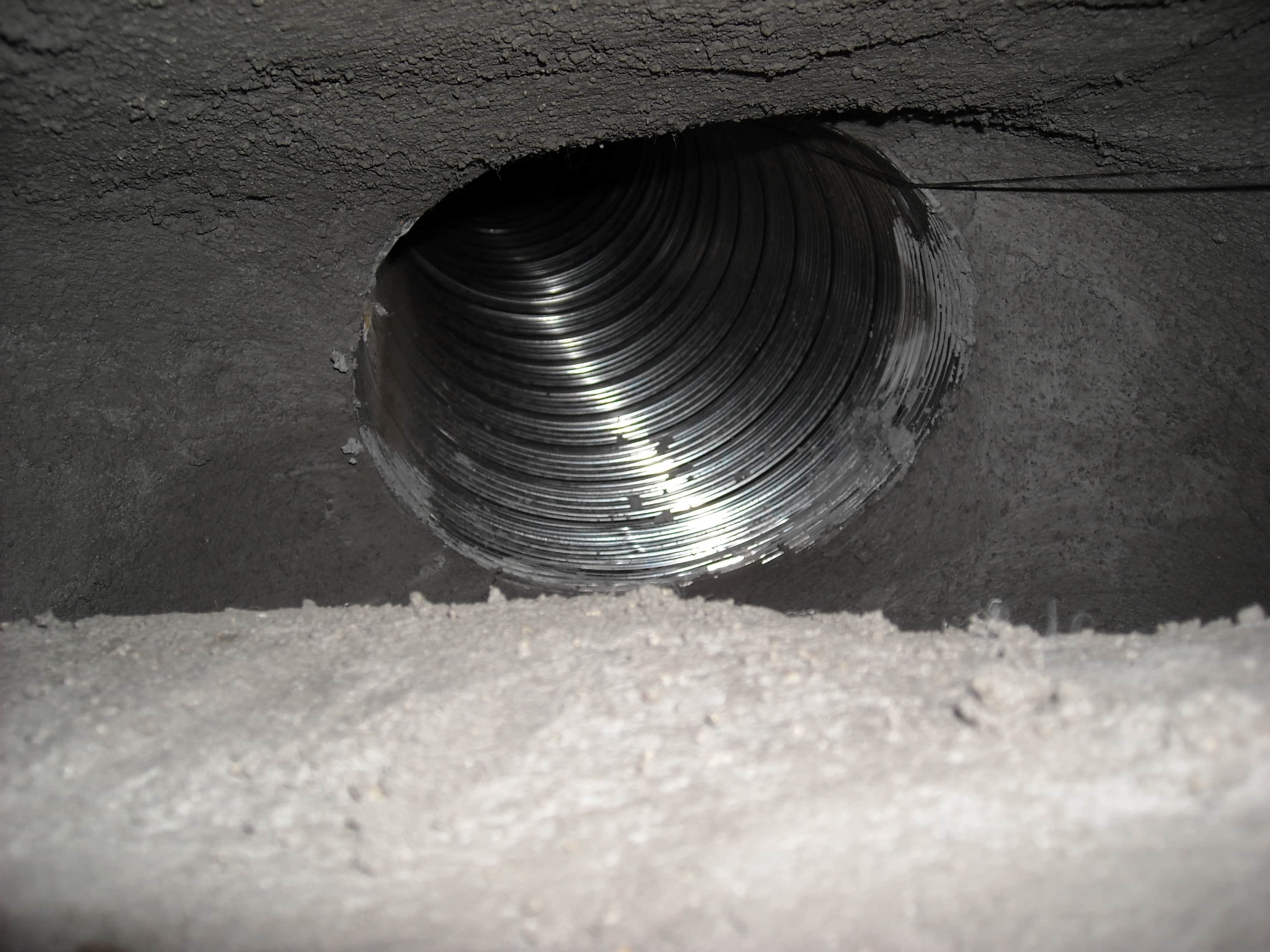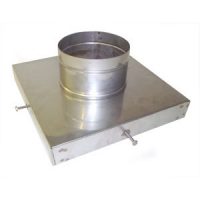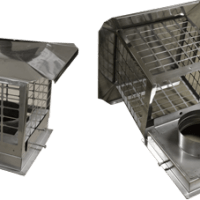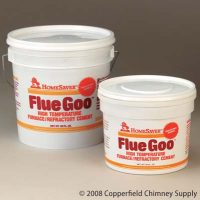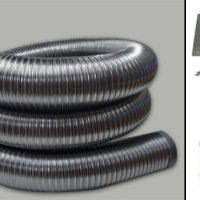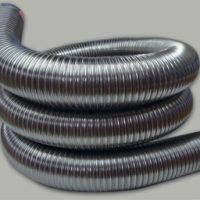To install a fireplace chimney liner first you need to know what size chimney liner. The size of the chimney liner depends on the square inches of the fireplace opening. It does not depend upon the size of the existing flue.
Click here to see exactly what size you need.
All fireplace chimney liners need insulation. This is necessary for performance reasons as well as safety. Most fireplace chimneys have either a square or rectangle flue. So when you install a round or oval liner there are going to be some open spaces in the chimney.
You will first need to fill in that gap with some insulation designed for chimneys. You will want to make the insulation pretty tight in there so it doesn’t fall out under its own weight. Or you could use a flat top plate on the bottom of the liner to seal up the gap around the liner.
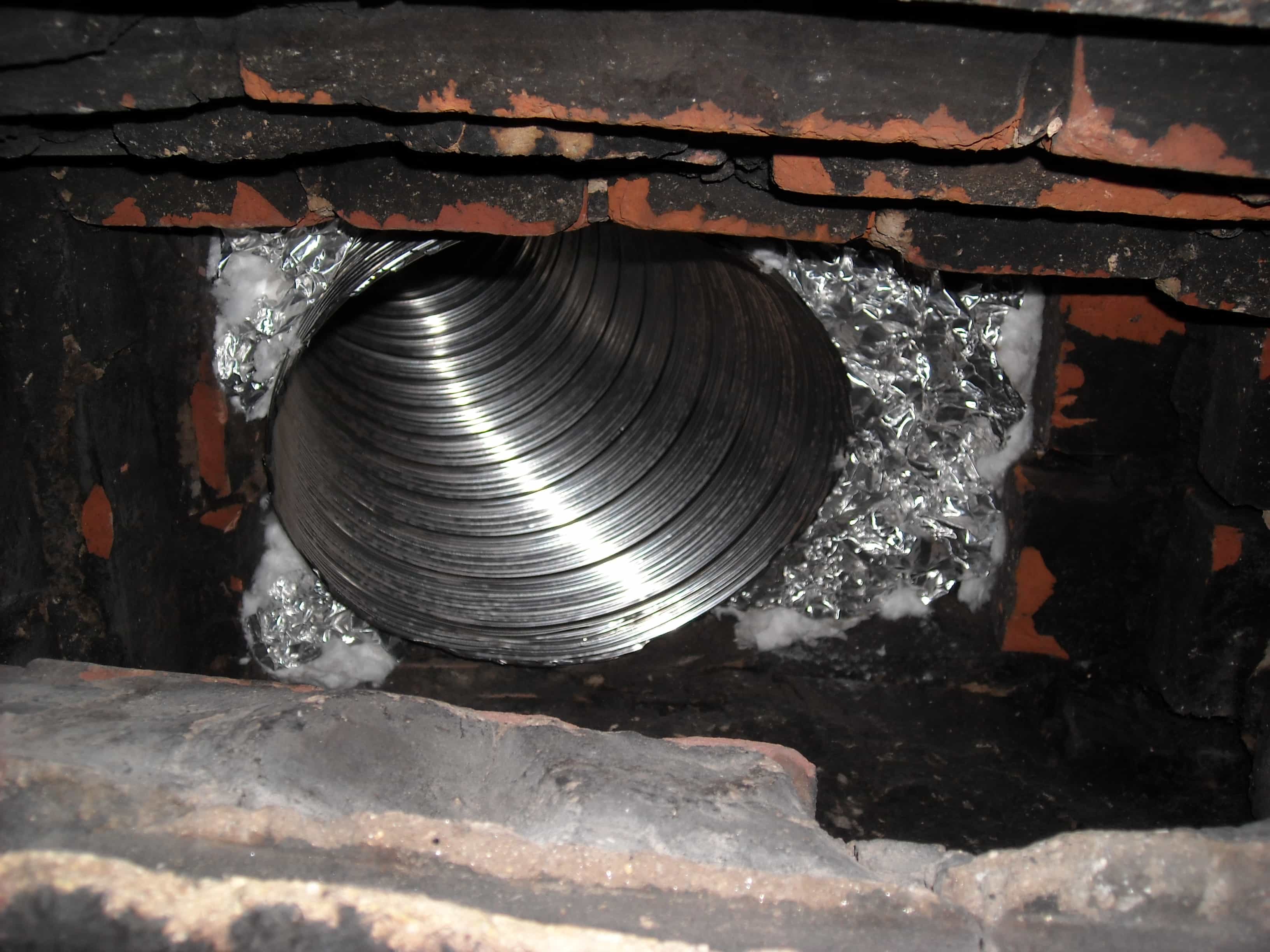 Once you have the insulation in the chimney packed tight around the liner, you will now need to cover it in a refractory cement. This is a special cement product designed for extremely high heat and can bond metal to masonry.
Once you have the insulation in the chimney packed tight around the liner, you will now need to cover it in a refractory cement. This is a special cement product designed for extremely high heat and can bond metal to masonry.
This may take some time and effort but it is what needs to be done. You can either coat the entire smoke chamber like this to almost eliminate turbulence and increase draft or you can just make a smooth transition into the chimney liner.
After you finish this step and it dries hard, then you can use the pour down insulation. For a fireplace many times this is the easiest.

